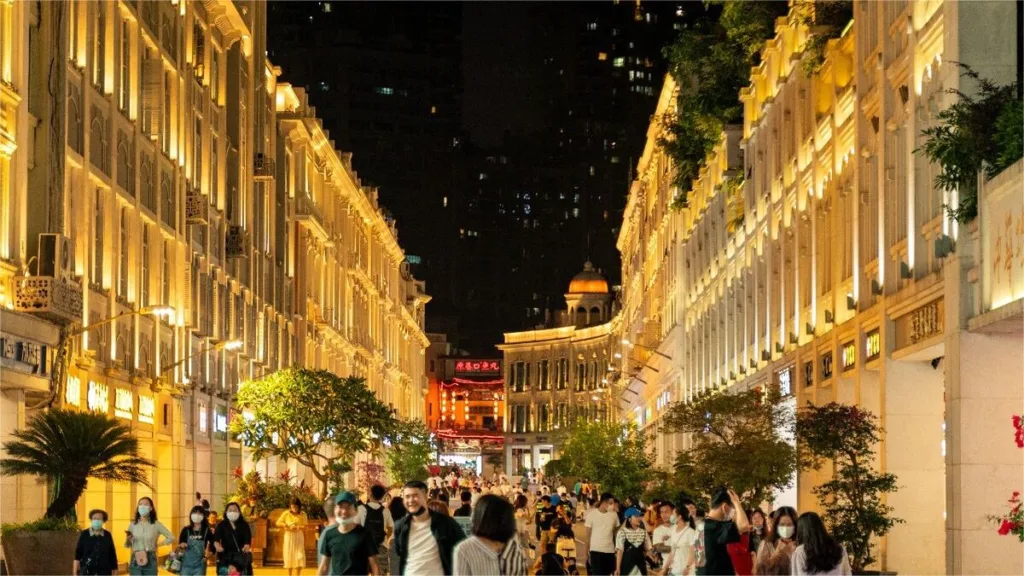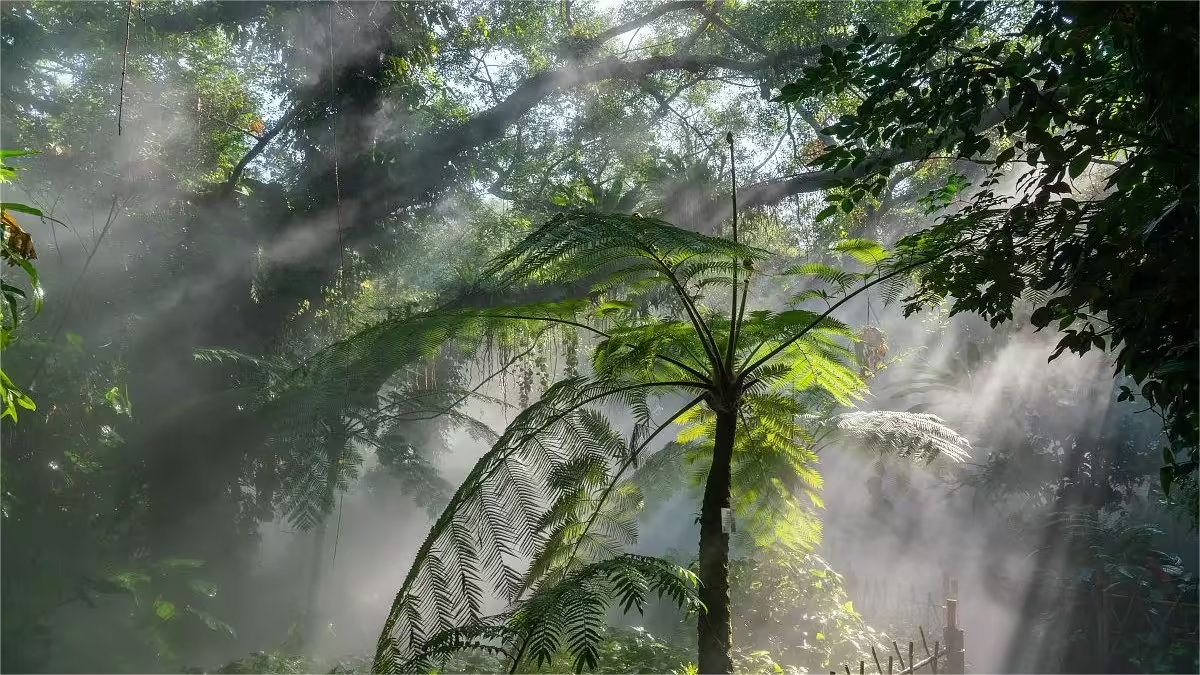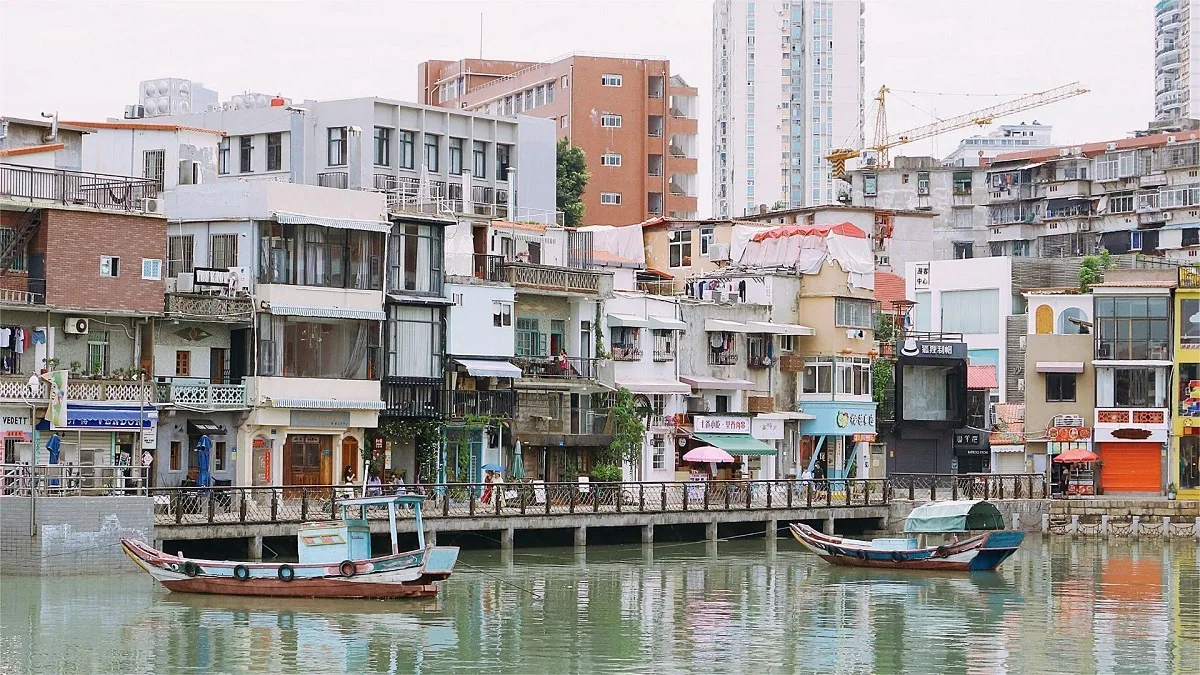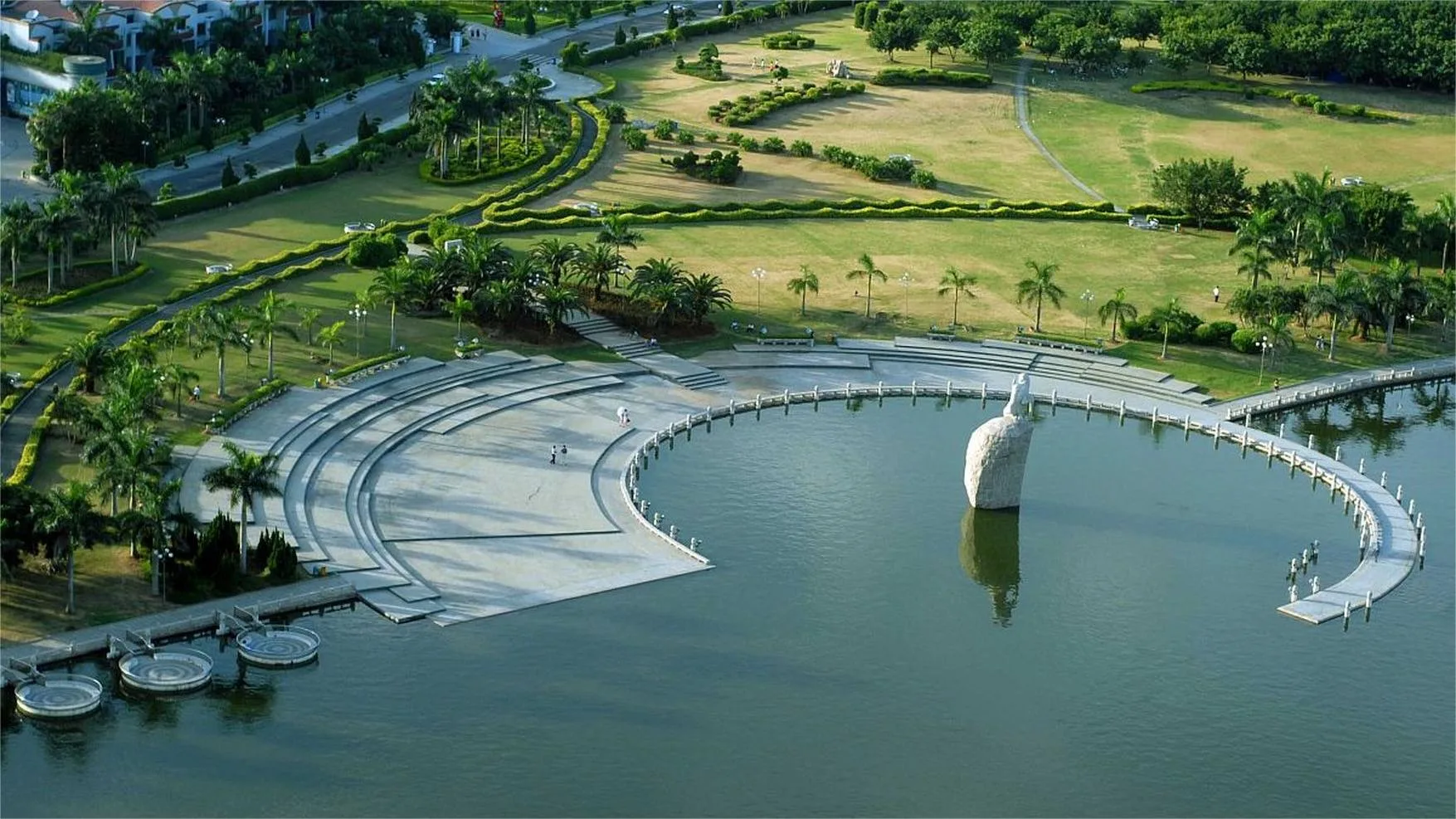South Putuo Temple (Nanputuo, 南普陀寺), located at the southeastern foot of Wulao Peak in Xiamen and adjacent to Xiamen University, is a significant Buddhist site in southern Fujian. The temple covers an area of 258,000 square meters with a building area of 21,270 square meters. It was originally built in the late Tang Dynasty and named Sizhou Temple. During the Song Dynasty’s Zhizhiping era, it was renamed Puzhao Temple. The temple fell into disrepair in the early Ming Dynasty and was not rebuilt until the Kangxi era of the Qing Dynasty. Due to its dedication to Guanyin Bodhisattva, similar to the Guanyin shrine on Mount Putuo in Zhejiang Province but located to the south, it was named “South Putuo Temple.”
South Putuo Temple is renowned for its Buddhist relics, including a blood-written copy of the “Lotus Sutra” from the Wanli period of the Ming Dynasty and a famous white porcelain Guanyin statue crafted by He Chaozong. Despite its historical and cultural significance, the temple is relatively small and can be toured quickly if visitors do not plan to climb Wulao Peak.
One of the temple’s highlights is its vegetarian cuisine. The vegetarian restaurant on the second floor is famous for its vegetarian banquet, often touted as the “Number One Vegetarian Feast in the World,” with an average cost of about 59 RMB per person. Additionally, the temple is known for its vegetarian cakes, available in various sweet and savory flavors. Popular varieties include coconut, pumpkin, and mung bean. Visitors can enjoy these delicacies while appreciating the serene and spiritual ambiance of the temple.
Table of Contents
- Basic Information
- Location and Transportation
- Highlights of South Putuo Temple
- Attractions near South Putuo Temple
Basic Information
| Estimated Length of Tour | 1 hour |
| Ticket Price | Free |
| Opening Hours | 8.00 – 17.00 |
| Telephone Number | 0086-0592-2087282 |
Location and Transportation
South Putuo Temple is located at 515 Siming South Road, Siming District, Xiamen, Fujian Province, near Xiamen University. To get there, you can take bus 1, 32, 45, 47, 100, 309, B5, J103, or M1 and get off at Xiamen University Stop (厦门大学站).
Highlights of South Putuo Temple
Great Compassion Hall (大悲殿)

The Great Compassion Hall, originally constructed during the Ming Dynasty, is a remarkable architectural and spiritual landmark within South Putuo Temple. Initially a wooden structure, it underwent significant renovation under the guidance of Master Taixu in 1930, adopting an octagonal, three-tiered flying eaves pavilion style. In 1962, the hall’s main structure was rebuilt using reinforced concrete while preserving the traditional wooden bracket sets as decorative elements. Standing 20 meters tall, the hall is perched on a stone platform behind the Mahavira Hall, featuring three-tiered flying eaves.
Inside, the hall enshrines Guanyin Bodhisattva, with a unique presentation: the front side showcases a two-armed Guanyin, while the other three sides display 48-armed Guanyin statues. The hall’s intricately designed dome, made entirely of wooden brackets without a single iron nail, is a marvel of craftsmanship, exemplifying the ingenuity and precision of ancient Chinese architecture. This makes it one of the finest examples of its kind in China. Due to the deep reverence for Guanyin among the people of southern Fujian, the hall enjoys a continuous influx of worshippers.
Sutra Repository Pavilion (藏经阁)

Built in 1936, the Sutra Repository Pavilion is a two-story structure that serves as both a spiritual and cultural repository. The ground floor houses the Dharma Hall, while the upper floor is home to the Jade Buddha Hall. The pavilion is adorned with white stone railings and surrounded by verandas on three sides, providing a serene environment for reflection and study. The pavilion boasts an extensive collection of Buddhist scriptures and cultural artifacts, including:
- The Ming edition of the “Tripitaka” (大藏经)
- The “Qisha Edition of the Tripitaka” from the Song Dynasty
- A blood-written “Lotus Sutra” from the Chongzhen era (1628-1644) of the Ming Dynasty
- Handwritten manuscripts of the “Amitabha Sutra” by Master Hongyi
- A Tang Dynasty bronze Buddha
- A Song Dynasty bronze bell
- Exquisite statues of Guanyin, including those crafted by renowned Ming Dynasty artist He Chaozong
- 28 Burmese jade Buddhas
- Calligraphy and paintings by modern masters, including Zhao Puchu, the former president of the Chinese Buddhist Association
Mahavira Hall (大雄宝殿)

The Mahavira Hall, constructed in 1926, is a stunning example of traditional Minnan architectural craftsmanship. This single-story structure features a hip-and-gable roof with double eaves, brick and stone walls, and intricate wooden beams and painted carvings. The hall is eight bays wide, adorned with green tiles and stone columns, showcasing the exquisite traditional techniques of southern Fujian architecture.
At the forefront of the hall are two Gratitude Pagodas, supervised by Master Miaozhan, adding to the majestic and solemn atmosphere of the temple. The expansive stone courtyard in front of the hall is broad and serene, with a prominent incense burner standing at its center. Flanking the courtyard are two white stone pagodas, further enhancing the grandeur of the hall.
Inside the hall, the central altar enshrines the statues of the Three Buddhas, representing the past, present, and future. Behind these statues, the hall also houses the statues of the Western Three Saints—Amitabha Buddha, Guanyin Bodhisattva, and Mahasthamaprapta Bodhisattva.
The Mahavira Hall serves as the temple’s central hub, where monks perform their daily chanting and conduct various ceremonies. It is the heart of the temple, where the sounds of bells and drums resonate, symbolizing the enduring presence of Buddhist teachings and the temple’s spiritual vitality.









The pigeons at Nanputuo are very friendly. When one of them grasped my hand with its little paws, the warmth melted my heart. These pigeons are usually hard to encounter during the first and fifteenth of the month, in the mornings, or on weekends due to the large crowds. It’s only on weekday afternoons that you can get so close to them!
To avoid the crowds, I arrived at South Putuo Temple right when it opened at 8:00 AM. I took my time walking around and spent about 40 to 50 minutes there. I heard that the vegetarian noodles are very delicious, but unfortunately, they don’t serve them in the morning (they told me they start serving at 10:30 AM). The only options available were congee, satay noodles (沙茶面), and some side dishes. I ordered a bowl of satay noodles, but I… Read more »
On a weekday, Nanputuo Temple is not very crowded and quite peaceful. When I entered and exited, I encountered some cats. They had an aloof expression, but still walked over to rub against me.
My favorite place is Nanputuo Temple. Although it’s always crowded, as soon as I step through the doors and hear the chanting broadcast, I feel light, comfortable, and at peace.
1️⃣ Luggage storage is available; you can go in through the East Gate, and it’s on the right side. 2️⃣ It’s best to make a reservation in advance. During the off-peak season, there aren’t many people, so you can go in without a set time, just with your reservation. In peak season, you need to enter at your scheduled time. 3️⃣ First, offer incense, then wash your hands – light the incense and pray. Follow the crowd in through the… Read more »
Inside the South Putuo Temple, there is a vegetarian restaurant, but it often has many visitors. There is also a vegetarian restaurant called Shanhuiyuan (善和缘素食馆) located on the fourth floor above the KFC near the West Village entrance of Xiamen University, with reasonable prices and a wide variety of dishes. It’s about a 10-minute walk from South Putuo Temple, and the operating hours are from 11:00 AM to 2:00 PM and 5:00 PM to 8:00 PM.
You need to make a reservation on the “Nanputuo Temple” (南普陀寺) WeChat account, and you can visit on the same day regardless of the time slot. The experience includes complimentary incense, hand cleansing, and a full ritual atmosphere.
First, go to the small house on the left to get incense, then proceed to the Yu Shou Chi (御手池) to wash your hands, and finally, light the incense at the designated spot. The temple is picturesque, with vibrant flowers, birds, tortoises, and lush trees. There are vegetarian pancakes and vegetarian noodles available to try. Making wishes here is quite effective, making it a worthwhile visit.
I heard that South Putuo is very spiritual, so I specifically traveled here to seek blessings. However, it was incredibly crowded, filled with many tour groups everywhere. It’s a beautiful place, but I once again regretted coming to Xiamen during the peak summer holiday.